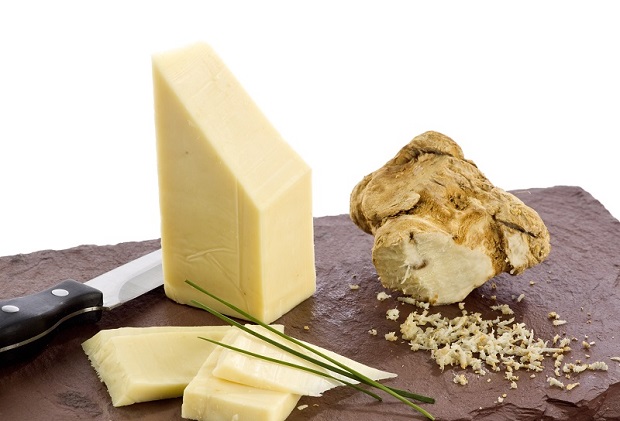
CHOOSING
Start by choosing the best quality cheese, no matter what variety you’re buying. Here are some tips:
- Cheese should have a fresh, clean appearance with no cracks or surface mold. Be sure the packaging is sealed properly, without any openings or tears that expose the cheese.
- Buy cheese at a store or market where frequent shipments of fresh cheese are delivered. Check the “use by” or “sell by” dates on packaged cheese. If buying fresh cut cheese, ask the clerk how best to wrap the cheese for storage as well as how long the cheese can be kept.
- Look for the factory identification. You’ll know you are buying a product that has to meet the highest of cheesemaking standards.
HANDLING
After arriving home with your cheese purchases, remember the three C’s of cheese handling:
- Clean: Because cheese easily absorbs other flavors, keep it away from other aromatic foods in the refrigerator.
- Cold: Refrigerate cheese between 34 and 38 degrees F (1-4 degrees C).
- Covered: Cheese loses flavor and moisture when it’s exposed to air, so make sure to wrap hard cheeses, such as Parmesan, in tightly drawn plastic wrap. Soft or fresh cheeses, such as Mascarpone, are best stored in clean, airtight containers. Semi-hard cheeses, including Cheddar and Gouda, can be wrapped with plastic wrap or with a lighter wrapping paper, such as parchment.
CUTTING and TRIMMING
Make cutting blocks of cheese easier by using these tips:
- Most cheese is easiest to cut when chilled. However, some hard cheese, such as Parmesan or Asiago, cut better when they are brought to room temperature.
- A chef’s knife works well for cutting most cheeses. If the cheese has a wax or rind, score it before you begin, ensuring a clean cut line.
- Before eating or serving, trim off any dry edges or surface mold.
STORING
Proper storage will preserve a cheese’s original flavor, appearance and quality. Leftover cheese should be stored following these suggested guidelines:
- Once a cheese is opened, it’s imperative to minimize moisture loss by keeping it covered in the refrigerator. See “Handling” section above.
- Natural and pasteurized process cheese should last about four to eight weeks in the refrigerator, while fresh and grated hard cheese with higher moisture content should be used within two weeks.
- If cheese develops surface mold, simply cut off about 1/4 to 1/2 inch (0.5-1 cm) from each affected side and use the remaining cheese within one week.
FREEZING
Cheese can be frozen, but we do not recommend it. A cheese that has been frozen is best used as an ingredient. The best candidates for freezing are firm cheeses, such as Swiss, and hard cheeses, such as Parmesan.
- When freezing cheese, wrap pieces tightly in weights of 1 pound or less.
- Label and date your cheese before freezing. Freezer temperature should be about 0 degrees F (-18 degrees C).
- It’s best to thaw cheese in the refrigerator. Use thawed cheese within a couple of days.
- Freezing cheese will change the texture. Semi-soft and hard cheeses will be more crumbly, softer cheeses will separate slightly. The nutritional value will remain stable.
Credits: Carr Valley Cheese
See more about Carr Valley Cheese factories and cheeses published on the World Cheese Map:
